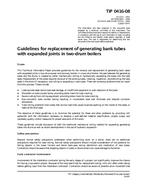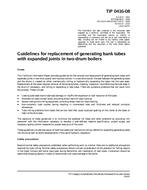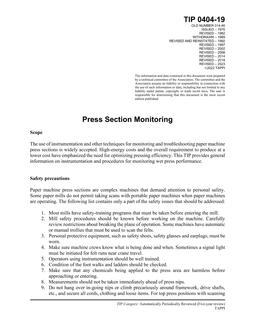
TAPPI TIP 0416-08
Click here to purchase
This Technical Information Paper provides guidelines for the removal and replacement of generating bank tubes with expanded joints in two-drum power and recovery boilers. In a two-drum boiler, the seal between thegenerating tubes and the drums is created by either mechanically rolling or hydraulically expanding the tubes into the tube seats. Replacement of the tubes requires removal of the existing tubes, reconditioning the tube seats in the drum, and rolling or expanding in new tubes. There are numerous problems that can result from this process. These include:
– Leaking tube seats due to tube seat damage, or insufficient expansion or wall reduction of the tubes
– Shoulders on tube counter bores, providing stress risers for tube cracking
– Severe cutting from rolling equipment, providing stress risers for tube cracking
– Non-concentric tube counter boring resulting in inconsistent tube wall thickness and reduced corrosion allowances
The objective of these guidelines is to minimize the potential for these and other problems by providing millpersonnel with the information necessary to develop a well-defined material specification, project scope, and necessary quality control measures for proper execution of this work.
These guidelines include discussion of both the traditional mechanical rolling method for expanding generating tubes into drums as well as recent developments in the use of hydraulic expansion.
Product Details
- Published:
- 10/01/2009
- Number of Pages:
- 16
- File Size:
- 1 file , 160 KB


